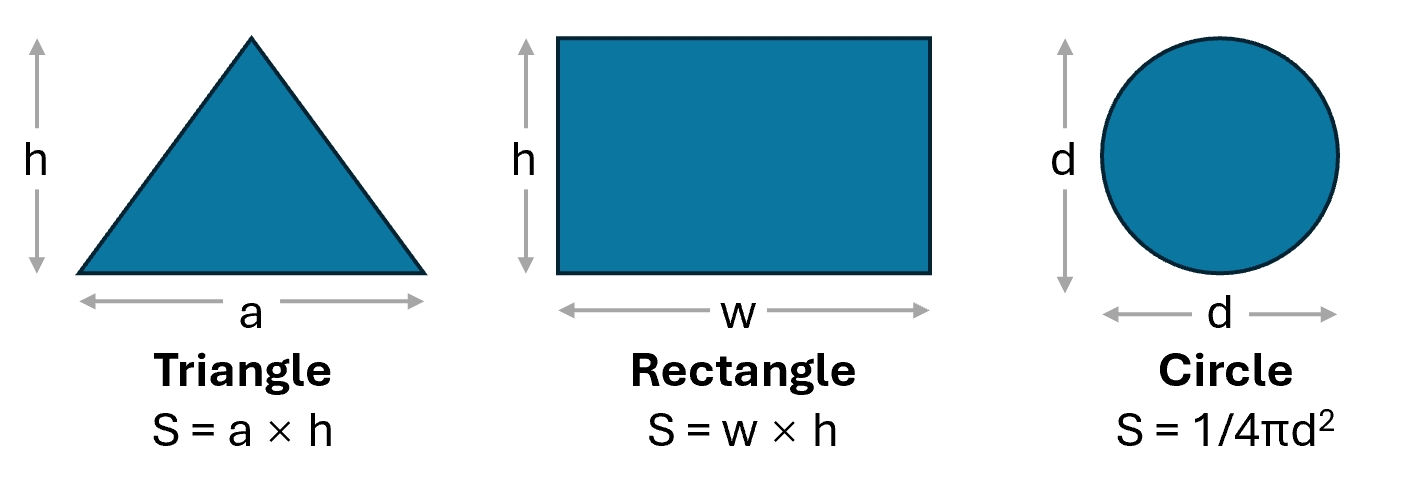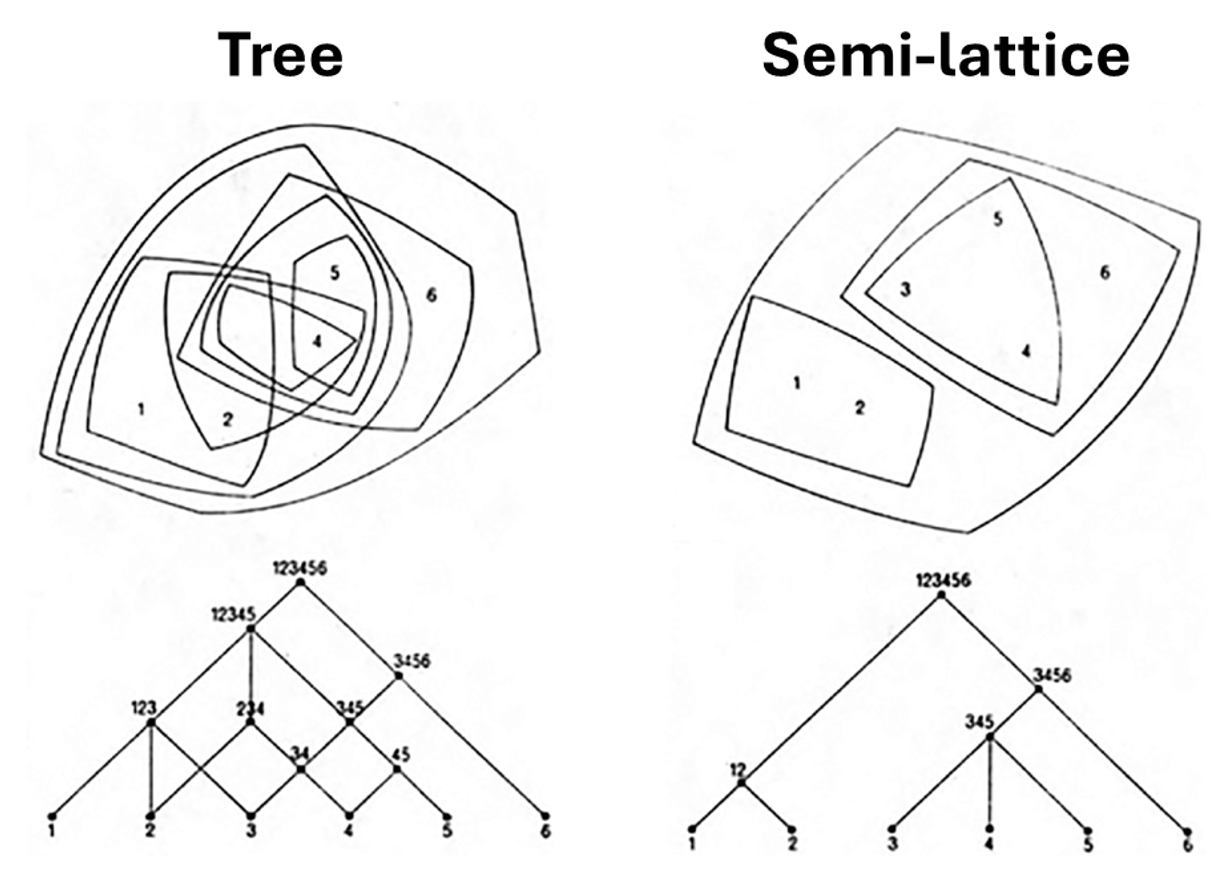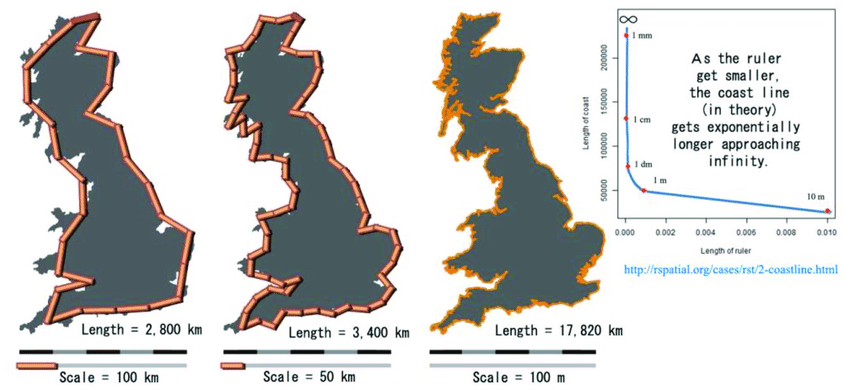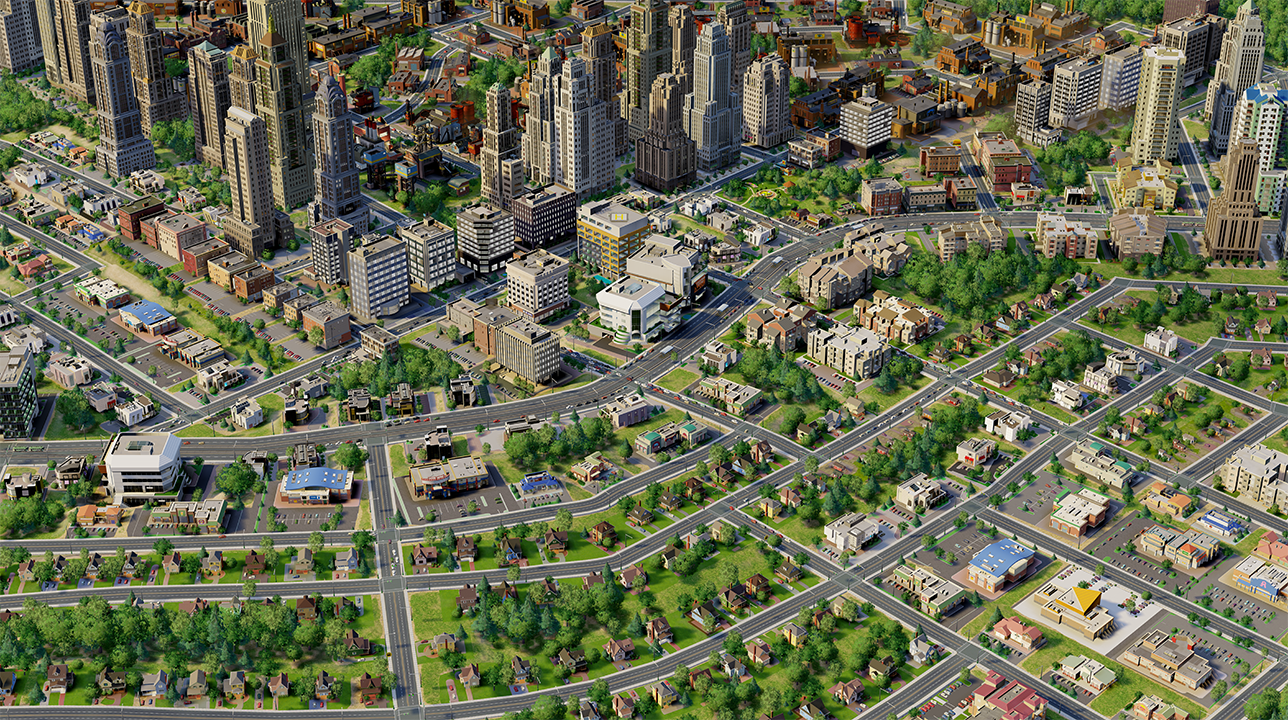Complexity
Complexity science represents a new kind of science, contrasting with the traditional or classical science the works of such as Descartes, Newton, and the framework of Euclidean geometry. Rather than just a discipline, it can be thought of as a new way of thinking—a lens through which we can explore and understand phenomena that traditional sciences have struggled to explain. It offers tools and concepts to uncover the hidden patterns, relationships, and dynamics in systems that are inherently complex. Although it is hard to define what complexity is, we can easily see complexity in our daily life.
How long is the coast of britain?
It seems like a very simple question. However, in the 1960s, a mathematician revisited this problem and discovered that it was impossible to obtain a consistent answer. The reason lies in the measuring process: the length of the ruler used for measurement matters. He found that the smaller the ruler, the longer the coastline of Britain appeared to be.
This is very different from Euclidean geometry, which deals with simple, regular, and measurable patterns. In our understanding, their lengths, areas, and volumes should be calculable.

However, in reality, such ideal forms rarely exist because we live in a complex world. To explain this complexity, we need a new perspective: fractal geometry.
A city is not a tree
Christopher Alexander introduced the essay A City is Not a Tree in 1965, which is one of the most remembered concepts in city science. It challenged the way cities were being designed at the time. He argued that urban planners often treated cities as “tree structures”—hierarchical, rigid systems where each part belongs to only one larger whole. This approach, according to Alexander, ignored the complexity and interconnectedness of real urban life.

Instead, he proposed that cities are more like semi-lattices, where elements overlap and interact in dynamic and unpredictable ways.

The connections among cities or within cities are complexity. That means urban spaces are not isolated or strictly categorized but interwoven, with overlapping functions and relationships. In a semi-lattice structure, a park might serve as a recreational space, a transit node, and a social gathering spot, all at once. This interconnectedness reflects the dynamic and adaptive nature of real urban life, which Alexander saw as essential for vibrant and livable cities. Unfortunately, during his time, few scholars were able to develop a mathematical model for this idea. Thirty years later, a new field emerged to tackle it, that is the complex network.
SIMCity and the life game
Human beings are not only interested in understanding the complexity of the world, but also in predicting what will happen. While the world is indeed complex, it still contains hidden order and underlying rules. For example, a wolf would not likely eat grass, but instead, it would prey on sheep.
This is where SIMCity comes in. It allows you to model and simulate what is happening, and what will happen, in your fictional city, based on your own preferences and rules.
You can observe many distinct properties in a complex system, such as non-lineaerity, topology, iteration and self-organization. With these key concepts in mind, let’s embark on an exciting journey into the fascinating world of urban complexity.

